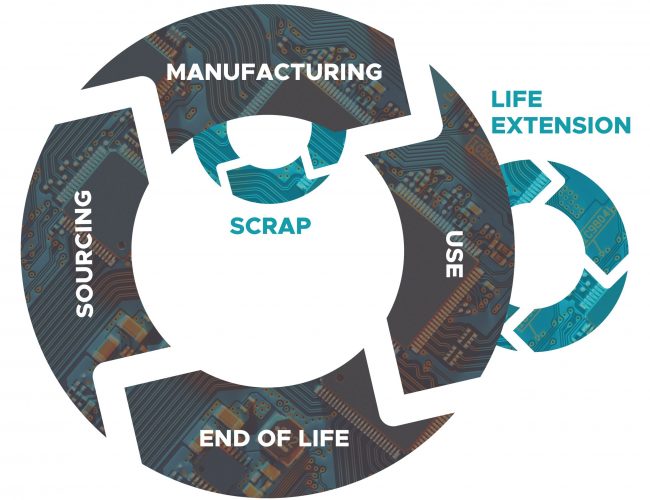Circular Economy & Sustainability In Electronics
Breathing New Life into Components, Saving the Planet, and Uncovering Economic Value
Electronic goods have revolutionised our daily lives and in this tech-hungry world, we are going through electronic devices at an alarming rate.
Hand in hand with this demand for electronics comes to a steep increase in electronic waste (e-waste). Each year a staggering 50 million tonnes of e-waste is produced and, if current trends continue, it is forecast to reach 120 tonnes by 2050. Sadly only 20% is recycled. That’s according to the Platform of Accelerating the Circular Economy (PACE) and the UN E-Waste Coalition in their report calling for reconsideration of the world’s biggest waste stream.
The effects of E-waste on our environment and the urgent need to tackle this problem is high on the agenda of every government and large organisations looking to improve their carbon footprint and indeed save our planet. The United Nations, G7 Summit committees have formed the Global E-Waste Partnership to address these issues as a priority.
“A circular economy is vital if we are to transform the electronics industry’s effects on human health, the environment, and biodiversity. It will allow us to reduce greenhouse gas emissions, save precious resources, and protect workers and communities from health hazards associated with waste” (Pace). A Circular Economy is essentially based on the principles of designing out waste & pollution, keeping products & materials in use, & regenerating natural systems.
Unlocking the power of circular economy in electronics with Retronix
In a world increasingly driven by electronics, sustainability is not just an option – it’s a necessity. At Retronix, we understand this better than anyone. We are committed to driving the circular economy in electronics, transforming the lifecycle of our products, and creating a sustainable future for all.
Our approach starts with component recovery. Instead of discarding electronic components after their initial use, we breathe new life into them. Through advanced techniques, we extend the lifespan of these components, reducing waste and contributing to a more sustainable planet.
Next, we focus on reballing and retinning. These processes involve restoring the functionality of electronic components that might otherwise be considered obsolete or inefficient. The result? We maximize their potential and recover significant economic value.
But our commitment to the circular economy does not stop there. We also take action against the counterfeit industry. Our authenticity tests ensure the integrity of every electronic component we handle, providing reassurance to our customers and discouraging counterfeit activity.
In doing so, we do more than just save the planet and recover economic value. We also contribute to a more ethical and transparent electronics industry.

Manufacturing Stage: Re-integrate high-value components from fallout back into your supply chain.
Life Extension: Retronix process, re-condition, refresh, test and verify components for aftermarket care and future sourcing.
End of Life & Re-sourcing: Recover your devices from scrap, prepare for re-use, test, validate and verify for integration in your manufacturing stages.
FURTHER INFORMATION IS AVAILABLE
Our Circular Economy brochure provides further details on our specialised service in which we resolve obsolescence issues, recover high value devices, reduce waste, recover value & starve the counterfeit market.
Want to know more about our green initiatives?
Contact the team today to discuss your requirements
We’d love to stay connected and send you Retronix updates, research and invitations to our events.
© 2023 | Retronix Ltd, North Caldeen Rd, Coatbridge, Scotland, United Kingdom. ML5 4EF | Email: sales@retronix.com | Phone: +44 (0) 1236 433 345


